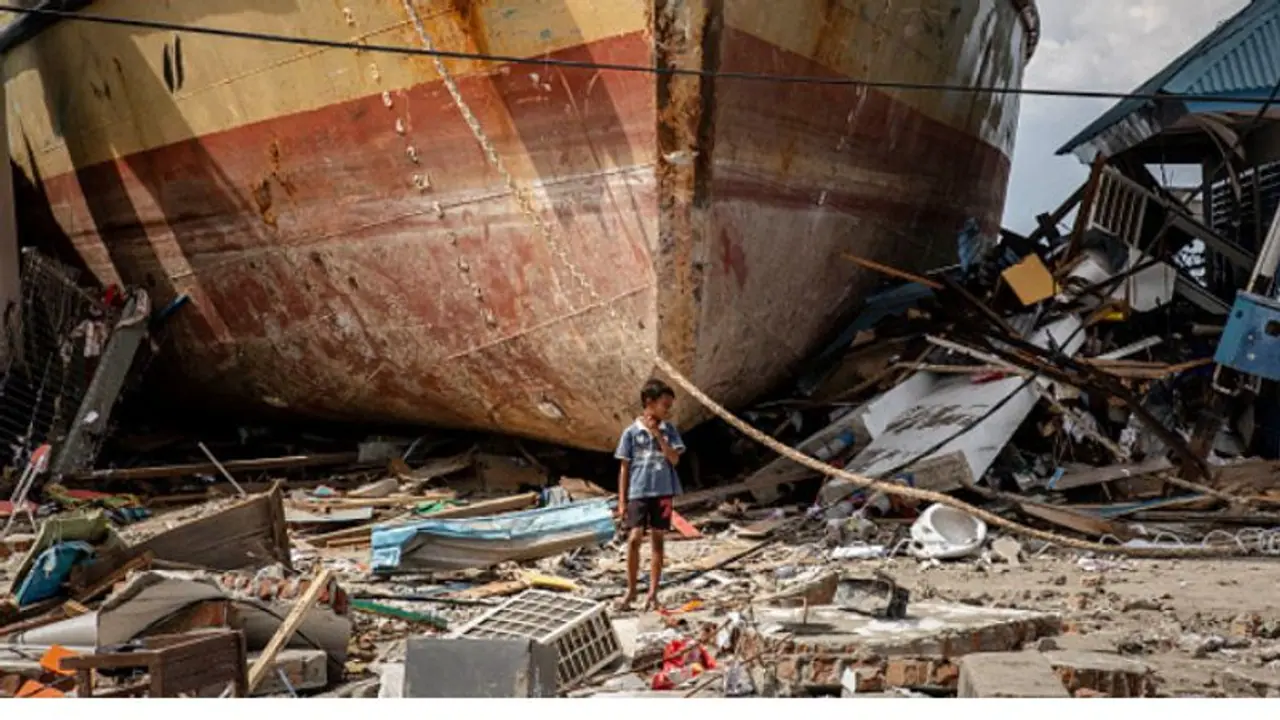People across Indonesia, Sri Lanka, India, Maldives, Thailand, Myanmar, Malaysia, Somalia, Tanzania, Seychelles, Bangladesh and Kenya were affected by what is considered the deadliest tsunami in history on December 26, 2004
New Delhi: Today marks 14 years since the cataclysmic Boxing Day tsunami that originated in the Indian Ocean, killing 2,30,000 people.
People across Indonesia, Sri Lanka, India, Maldives, Thailand, Myanmar, Malaysia, Somalia, Tanzania, Seychelles, Bangladesh and Kenya were affected by what is considered the deadliest tsunami in history on December 26, 2004.
The tsunami was caused by a magnitude-9.1 earthquake off the northern coast of Sumatra, Indonesia.
According to the Australian Disaster Resilience Knowledge Hub, the total cost of damage in the region is estimated at $10 billion.
Indonesia still struggles
On December 23, a tsunami, apparently caused by the eruption of an island volcano, killed more than 400 people around Indonesia’s Sunda Strait, sending a wall of water crashing ashore and sweeping away people attending a beach concert along with hundreds of houses including hotels. Around 1,500 people were injured and 16,000 displaced.
The disaster could have been caused by undersea landslides from the eruption of Anak Krakatau, a volcanic island formed over years from the nearby Krakatau volcano, scientists from Indonesia’s Meteorology and Geophysics Agency said. They also cited tidal waves caused by the full moon.
The worst affected area was the Pandeglang region of Banten province in Java, which encompasses the Ujung Kulon National Park and popular beaches, the disaster agency said.
Rescue work ongoing
Indonesian authorities on Wednesday resumed the search operations for the 154 people who went missing after the tsunami hit the Sunda Strait.
Heavy rain continued to hamper search and rescue operations.
On Tuesday afternoon, hundreds of people fled to high ground in Java's Sumur district during a new Anak Krakatau explosion.
Also read: Tsunami in Indonesia kills 168: A look at 6 worst natural disasters of 2018
Indonesia is situated on the Pacific Ring of Fire, an area of great seismic and volcanic activity that is shaken every year by some 7,000 earthquakes, most of them moderate.
Is India prepared?
The 2004 tsunami killed around 10,000 people in India – with the region having a poor warning system to alert people of the incoming devastation that could have mitigated the disaster.
The Indian Tsunami Early Warning Centre, launched by the government under the Indian National Centre for Ocean Information Services in 2007, collects and analyses seismic activity in the Indian Ocean.
This early warning system was one of the measures taken by the Indian government after the deadly 2004 tsunami. The government also subsequently set up a National Disaster Management Authority.
